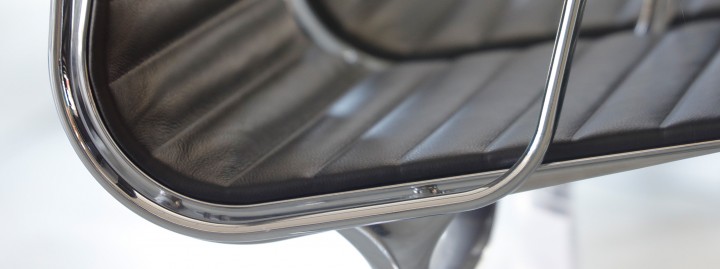Product counterfeits and replicas
The design of furniture is subject to copyright or design rights (registered designs) or trademark rights with well-known manufacturers. The designers hold the copyright and can grant licences to companies such as Vitra or Fritz Hansen to manufacture their designs. The designers can allow or prohibit interested companies from manufacturing them. In Germany, copyright does not expire until decades after death. During this period, the trade and import of furniture is only legal if the heirs have given permission to market it.
Genuine or counterfeit?
Companies offering legitimate original furniture have been authorised to do so by designers or their heirs; they have acquired the licence to reproduce or "re-edition" the classics. In Germany and most EU countries, creative works are legally protected for up to 70 years after the death of the author. The sale of protected classics without a licence is prohibited; anyone who buys replicas in Germany is not liable to prosecution. However, the private sale of replicas is punishable if the furniture is resold or transported. Commercial trade is punishable by law in many countries. In addition, German customs may confiscate and destroy the order because the carrier is violating German copyright law. There is a threat of fines and even imprisonment.
What are plagiarisms?
The word plagiarism comes from the Latin plagiārius (soul seller) and means the illegal appropriation of other people's intellectual property. In the field of art, this concerns texts, music, design and works of art; in the field of scientific knowledge, it concerns inventions, developments and ideas. There is a grey area between unlawful and legitimate appropriation of patent rights or design patents. The chairs and other classics by Charles and Ray Eames and Arne Jacobsen are often copied. If the chairs are marked, for example, with "Design by Eames" or "Inspired by Arne Jacobsen" and their own level of creation is depicted, this is not a legal copyright infringement. However, manufacturers of so-called plagiarised products are on thin ice, because as we all know, in court and on the high seas you are only in God's hands. Moreover, questions arise as to whether the quality is equal to the originals and whether the resale value exceeds the flea market price. Designers usually spend a long time fiddling with the materials, the statics and the ergonomics of furniture. Therefore, load-bearing capacity, angle of inclination and environmental friendliness in the manufacture of furniture are also criteria that customers could or should consider when buying furniture.
What counterfeit products are there?
Some suppliers hide their intention to plagiarise, others openly communicate that they sell so-called copies. Some are also clumsy fakes; a DAW dining table by Charles and Ray Eames cannot exist because the "DAW" stands for Dining Height Armchair Wood Base - if a recliner can transform into a dining table, there must be magic involved. Some sellers claim to source the products directly from the manufacturers and therefore be able to make the low price possible. There are many reasons for fakes, one of which is ostensibly honourable, namely to make good design affordable to all classes of buyers.
Recognising fakes
If someone deliberately buys furniture that infringes copyright or even trades in such products, this is a criminal offence. If furniture classics from abroad are offered at unrealistically low prices, they are usually not originals. Even piece numbers are no guarantee of authenticity. Often, these products only come with a comparatively short guarantee period. When buying, pay attention to the details, screw connections and milled out areas are always clean on the stamps, the distances are correct. Originals always have identical dimensions. Vitra chairs are stamped on the underside of the seat shell with the details of the model and designer, and there is also a sticker with the serial number and date of manufacture. Fritz Hansen awards the label "Republic of Fritz Hansen", which is shown in red, brown or black and white depending on the decade.
Companies with tradition: Vitra and Fritz Hansen
Buy safe with pro office number - the original comes from your pro office shop. The furniture bears the GS test mark, the manufacturers only use very high-quality materials with proof of origin. Vitra holds the rights to the Eames furniture, Fritz Hansen produces the furniture by Arne Jacobsen: The Swan Chair ™, the Egg Chair™, the Ant Chair™ (the legendary chair "The Ant") and other chairs by Jacobsen are also fully identified with the manufacturer Fritz Hansen. As early as 1934, there was a close collaboration between Jacobsen and the traditional company from 1872, which completely shaped Fritz Hansen design in the 1950s. Seven years after the company was founded, the couple Willi and Erika Fehlbaum, the founders of Vitra in 1950, acquired the licences for the design of Charles and Ray Eames, which today apply to Europe and the Middle East. Another Vitra beacon is the Panton Chair, which enjoys enduring popularity and will be offered in new colours and sizes in 2021. Would you like more information? Feel free to contact us or send us an email.





